


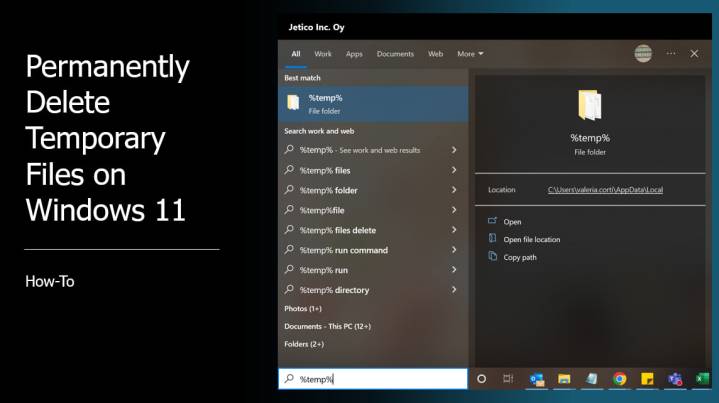
How to permanently delete temporary files on Windows 11? You may think that temporary files don’t remain on your system for very long, but sometimes they do. Although Windows 11 offers a way of removing temporary files, this method doesn’t delete data for good.
In this blog, we explain what temporary files are and why you need to remove them. We then provide step-by-step instructions on how to permanently delete temporary files from your hard drive.
Temporary files, also known as temp or tmp files, are generated to store information temporarily while data is being processed or used by a program. Temp files can also be created by the operating system when memory is needed for another task, or for backup purposes.
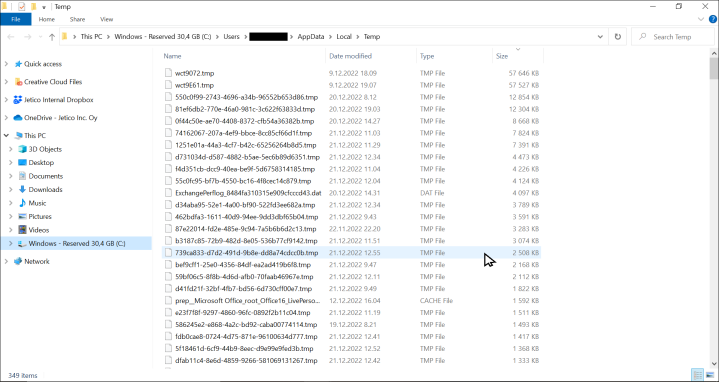
Many programs don’t delete temporary files when they are no longer needed. Instead, this so-called ‘temporary’ data can accumulate and remain on your computer for a very long time. Temporary information obviously varies in content, but all temp files store traces of your activity and potentially sensitive data.
Here are the 3 main risks associated with temporary files:
To maintain your data privacy, it’s strongly recommended to delete your temporary files with a trusted data wiping solution.
Now you know about the risks of letting your temp files stick around, it’s time to learn how to permanently remove them with BCWipe.
Step 1: Getting Started
You can begin by installing BCWipe. If you want help with installing the software, just check this how-to video.
Not quite ready to purchase BCWipe yet? No problem — get started with your free trial today.

Step 2: Wipe Temporary Files with One Random Wiping Pass
Here’s how to begin the wiping operation with one random wiping pass scheme.
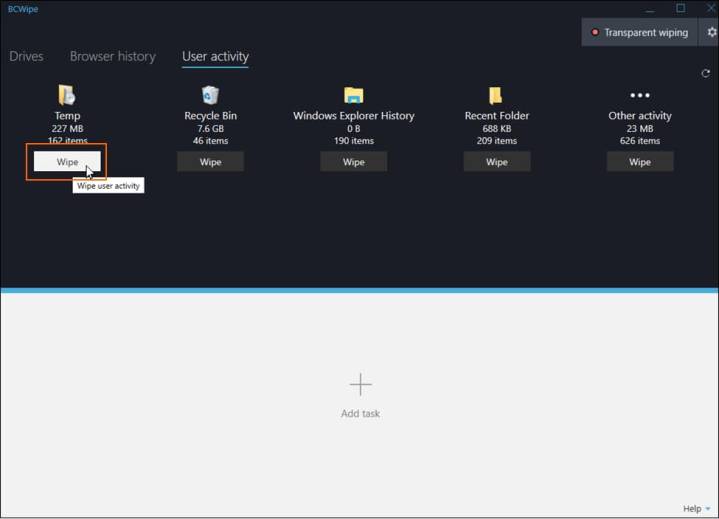
Step 3: Manually Select the Wiping Scheme (optional step)
If you would like to manually select the wiping scheme used for the operation, then please follow the instructions in this additional step.
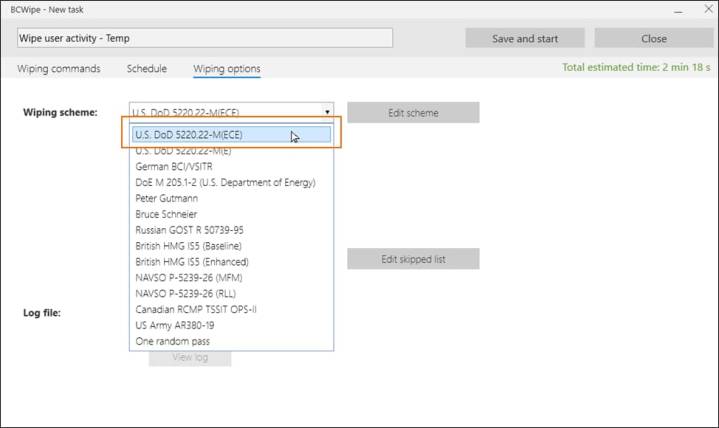
Step 4: Wiping Temp Files for SSD Users (optional step)
This is an optional step that only applies to users wiping data from solid-state drives (SSD).
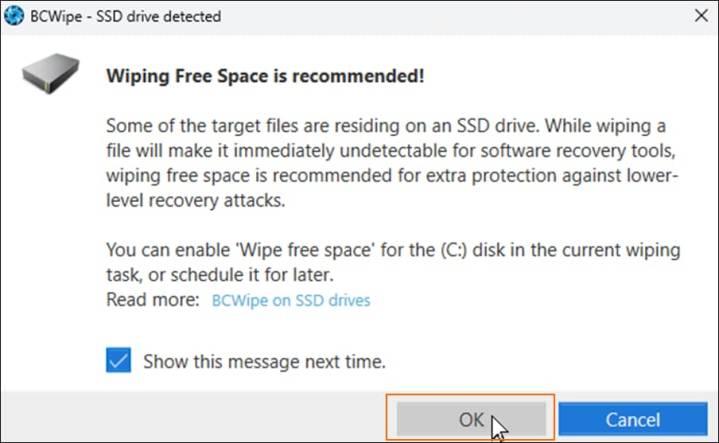
Step 5: Wipe Your Temporary Files
Now you can sit back and wait for your temporary files to be wiped.

Now you know that wiping temporary files is the way to go, you can rest assured that third parties will not be able to reconstruct data from the temp folder.
Finally, practicing good cyber hygiene is something we’ve been advocating for over a decade. It’s a sensible idea to clean up your system every once in a while and flush out all traces of data remanence. This would naturally include clearing out your temp folder to remove the names of recently used files, traces of Internet activity and other unneeded data. So if you’ve followed our step-by-step instructions, you’re well on your way to having enviable cyber hygiene!
To find out more about data wiping, check out our ultimate guide to securely wiping computer hard drives clean.
Happy Wiping!

Jetico Technical Support helps customers find answers...
- Access our knowledge base articles
- Watch our How-To videos
- Contact us for insights
